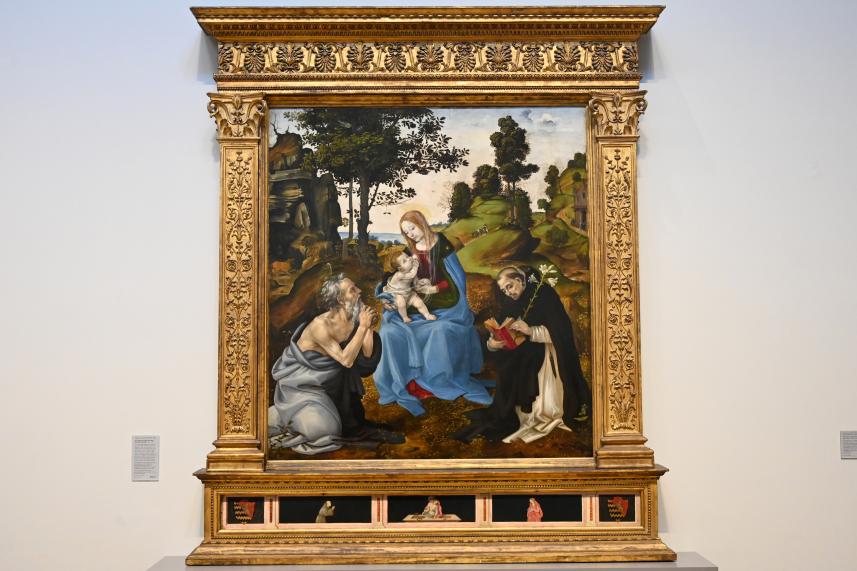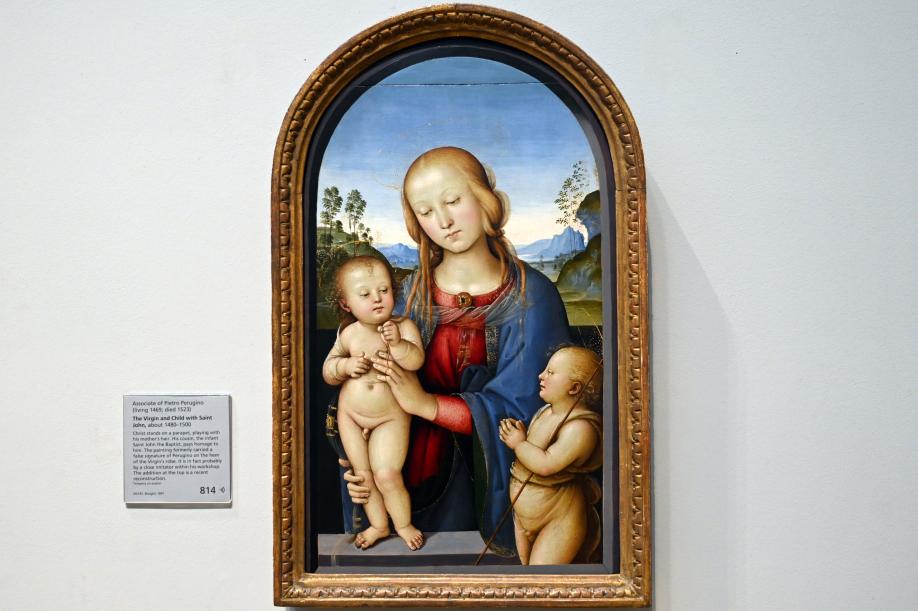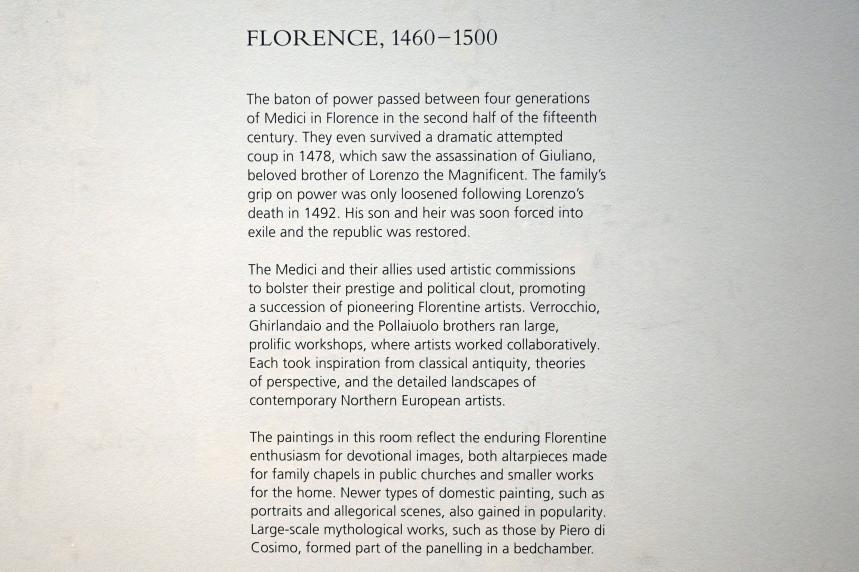Position London, National Gallery
Bedeutende Künstler in London, National Gallery, Saal 59 (1451–1507)
Künstler in London, National Gallery, Saal 59
Andrea del Verrocchio (Werkstatt)
1435 Florenz - 1488 Venedig
Gherardo di Giovanni del Fora
um 1445 Florenz - 1497 Florenz
Jetzt: London, National Gallery, Saal 59 (Inventar-Nr. NG666)
um 1450–1453
Jetzt: London, National Gallery, Saal 59 (Inventar-Nr. NG667)
um 1450–1453
London, National Gallery, Saal 59 (Inventar-Nr. NG2508)
um 1467–1469
London, National Gallery, Saal 59 (Inventar-Nr. NG781)
um 1470–1475
London, National Gallery, Saal 59 (Inventar-Nr. NG928)
um 1470–1480
London, National Gallery, Saal 59 (Inventar-Nr. NG296)
um 1476–1478
London, National Gallery, Saal 59 (Inventar-Nr. NG1412)
um 1480
London, National Gallery, Saal 59 (Inventar-Nr. NG698)
um 1495
London, National Gallery, Saal 59 (Inventar-Nr. NG1196)
um 1475–1500
London, National Gallery, Saal 59
Herkunftsorte













